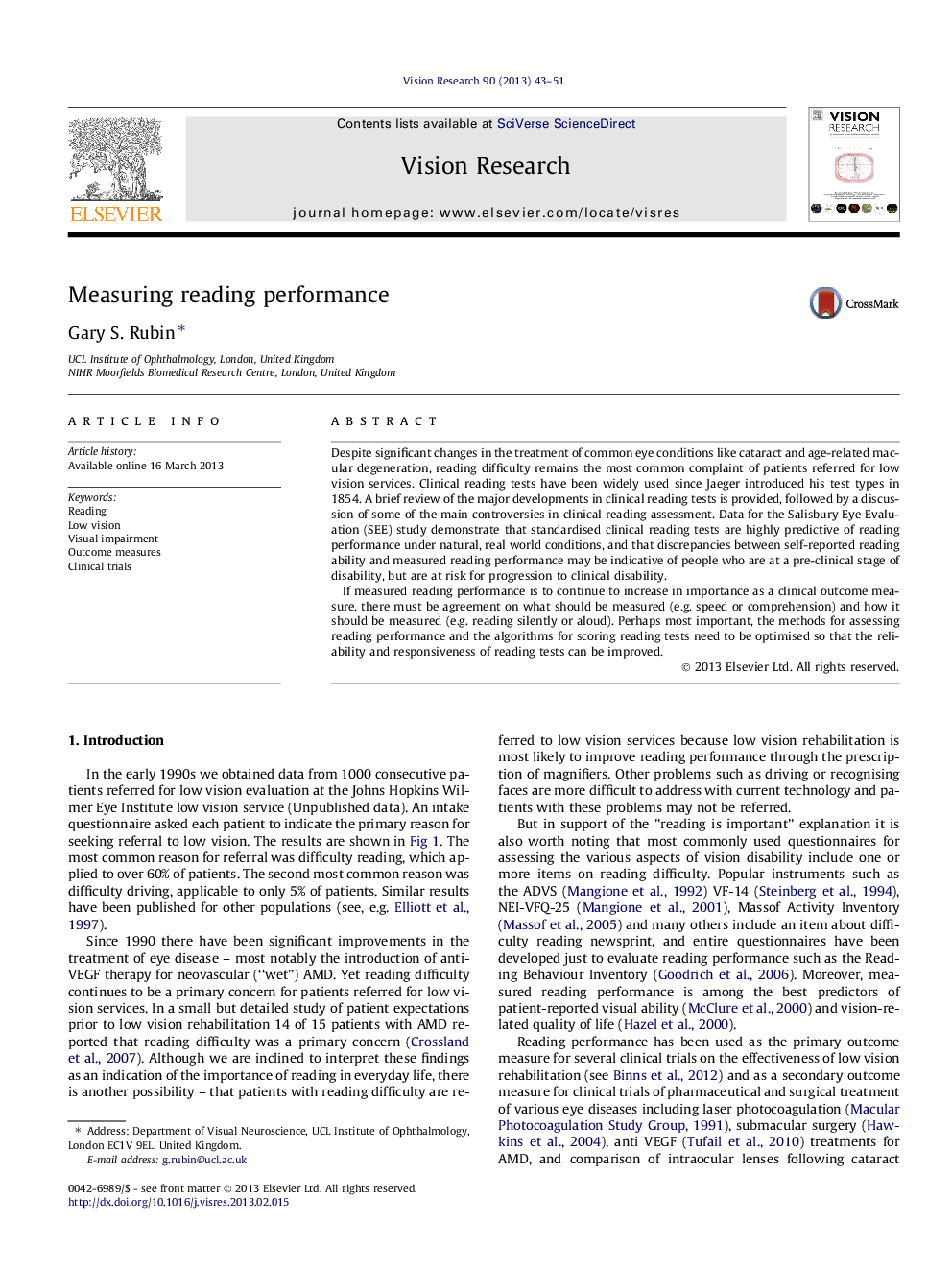| Article ID | Journal | Published Year | Pages | File Type |
|---|---|---|---|---|
| 6203581 | Vision Research | 2013 | 9 Pages |
Despite significant changes in the treatment of common eye conditions like cataract and age-related macular degeneration, reading difficulty remains the most common complaint of patients referred for low vision services. Clinical reading tests have been widely used since Jaeger introduced his test types in 1854. A brief review of the major developments in clinical reading tests is provided, followed by a discussion of some of the main controversies in clinical reading assessment. Data for the Salisbury Eye Evaluation (SEE) study demonstrate that standardised clinical reading tests are highly predictive of reading performance under natural, real world conditions, and that discrepancies between self-reported reading ability and measured reading performance may be indicative of people who are at a pre-clinical stage of disability, but are at risk for progression to clinical disability.If measured reading performance is to continue to increase in importance as a clinical outcome measure, there must be agreement on what should be measured (e.g. speed or comprehension) and how it should be measured (e.g. reading silently or aloud). Perhaps most important, the methods for assessing reading performance and the algorithms for scoring reading tests need to be optimised so that the reliability and responsiveness of reading tests can be improved.
⺠Reading difficulty is the most common complaint of people referred for low vision services. ⺠Significant developments in the design of clinical reading tests are briefly reviewed. ⺠Standardised clinical reading tests are informative about everyday reading. ⺠Discrepancies between self report and measured speed may predict future disability. ⺠Controversies about how and what to measure as reading outcomes are discussed.
